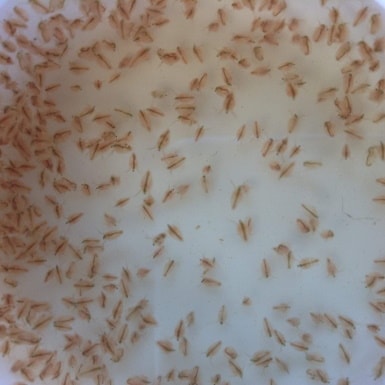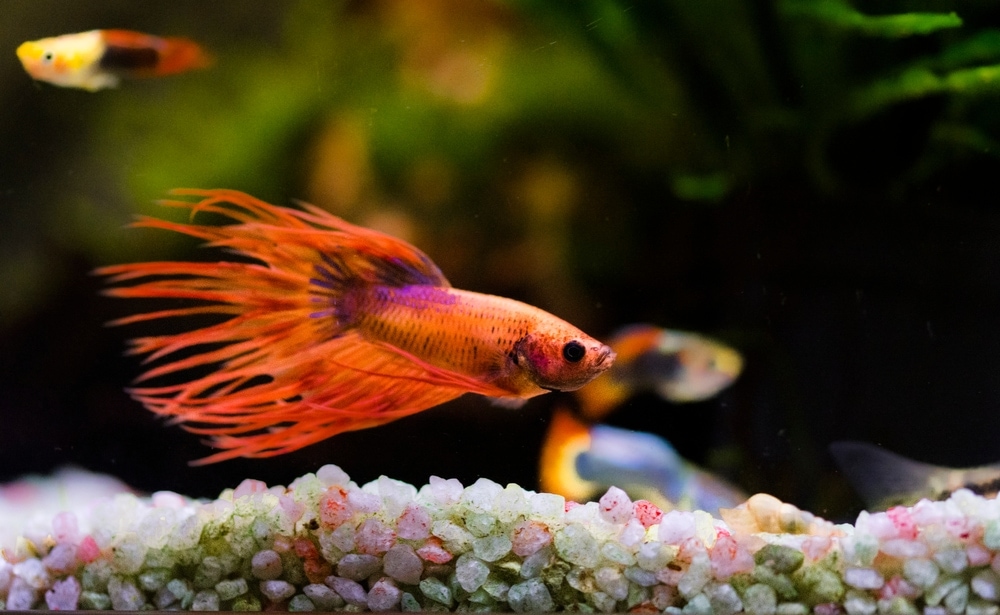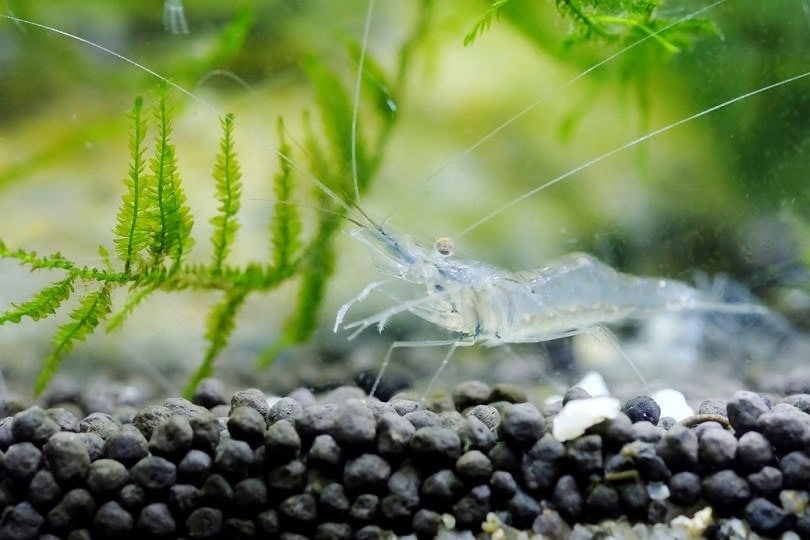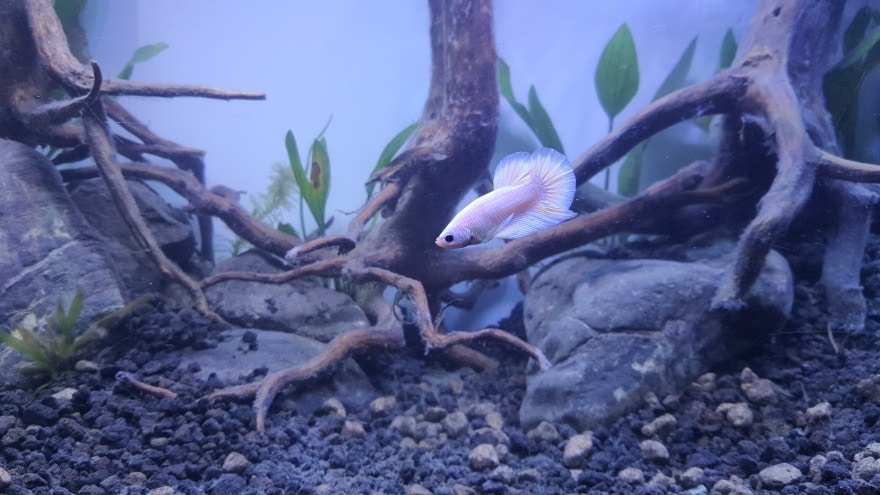10 Best Live Foods for Bettas – 2024 Reviews and Top Picks
Updated on
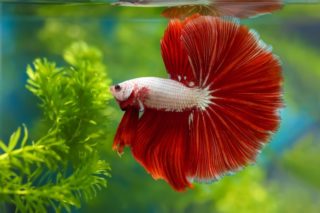
As time has gone on, we’ve become far more aware of the nutritional needs of our fish. The most important thing we’ve learned is that variety is important to keeping our fish healthy, and that feeding the same flake or pellet food every day may not be meeting all of their nutritional needs. Major advances have been made in the world of fish foods, including the addition of live foods, which are extremely nutrient-dense but shouldn’t be fed as an exclusive diet.
We’ve researched and reviewed the best live foods for Betta fish to help make choosing a vital part of your Betta’s diet easier. We want to remove the confusion surrounding live foods and ensure that our Betta fish are receiving nutritionally sound and safe foods for maximum health and longevity.
A Quick Comparison of Our Favorites (Updated in 2024)
| Rating | Image | Product | Details | |
|---|---|---|---|---|
| Best Overall |

|
Aqua L’amour Live Daphnia |
|
Check Price |
| Best Value |

|
VPoint Brine Shrimp Eggs |
|
Check Price |
| Premium Choice |

|
Uncle Jim’s Worm Farm Red Wigglers |
|
Check Price |

|
Josh’s Frogs Wingless Fruit Fly Culture |
|
Check Price | |

|
Insect Sales Live Vinegar Eels |
|
Check Price |
The 10 Best Live Foods for Bettas
1. Aqua L’amour Live Daphnia – Best Overall
| Recommended Feeding Amount | 8 grams |
| Recommended Feeding Routine | Daily |
| Protein Content | 45% |
The best overall live food for Betta fish is Aqua L’amour Live Daphnia. This product contains at least 200 live Daphnia, also known as Water Fleas. These small crustaceans are easy to care for and reproduce quickly, so you’re likely to end up with a self-replenishing food source with live Daphnia. They are known to help enhance the colors of Bettas and are highly nutritious with a protein content around 45%. Since this is a live food, uneaten Daphnia are unlikely to foul your water.
The feeding recommendation of 1.8 grams is meant to be fed daily in split feedings. However, this can be difficult to measure out the appropriate amount, and feeding Daphnia daily with no variety will not meet the nutritional needs of your Betta. Aim to feed no more than what your Betta can eat in 2-3 minutes and make sure Daphnia are part of a regular rotation of foods.
- 200+ Daphnia per order
- Easy to care for
- Reproduce quickly
- Sustainable food source
- Enhance coloration in Bettas
- Protein content of 45%
- Unlikely to foul water
- Portioning can be difficult
- Although the manufacturer recommends it, should not be only live food for your Betta
2. VPoint Brine Shrimp Eggs – Best Value
| Recommended Feeding Amount | Size of Betta’s eye |
| Recommended Feeding Routine | 1 – 2 times daily |
| Protein Content | 55 – 60% |
The best live food for Bettas for the money is the VPoint Brine Shrimp Eggs. This product contains between 1.5-25 million eggs per order, depending on the package size chosen. These small crustaceans are high in protein, with some sources claiming they are greater than 70% protein, but 55-60% protein is the more acceptable amount. Either way, they are nutrient dense, making them great for adult and fry Bettas alike. This nutritional content ensures rapid but healthy growth in your fish. Aim to feed no more than the size of your Betta’s eyeball with every feeding.
These are eggs that require hatching, so it will take some setup on your part to ensure your baby Brine Shrimp are successfully hatched. Although they can be fed multiple times per day, they should be part of a rotation of live foods.
- Up to 25 million eggs per order
- Protein content of 55-60% or more
- Great for adult and fry Bettas
- Support rapid growth
- Easy to care for
- Unlikely to foul water if fed in correct portions
- Requires hatching the eggs
- Should not be only live food source
3. Uncle Jim’s Worm Farm Red Wigglers – Premium Choice
| Recommended Feeding Amount | Size of Betta’s eye |
| Recommended Feeding Routine | 3 – 4 times per week |
| Protein Content | 55 – 70% |
The premium pick for live Betta fish food is the red wigglers from Uncle Jim’s Worm Farm Red Wigglers, which includes 250 live worms. This small variety of earthworm is highly nutrient dense and extremely easy to care for. These worms have the additional benefit of being able to help with composting, so you can keep them in your veggie scrap compost bin, and they’ll help break the food down while providing a sustainable source of live food for your Betta. Their high protein content of 55 – 70% means they’re great for supporting growth and development.
Apart from very small babies, these worms are far too large to be fed to Betta fish whole. This means you’ll have to be willing to chop up a live worm for proper portioning. Keep in mind that one worm would be multiple meals for your Betta, so it’s a good idea to limit the number of times per week you feed red wigglers to avoid killing multiple worms that are mostly going to waste.
- 250 live worms per order
- Easy to care for
- Can help with food composting
- Sustainable food source
- Protein content of 55-70%
- Support rapid growth and development
- Too large to be fed whole so must be chopped
- Most of a single worm will go to waste due to portioning
4. Josh’s Frogs Wingless Fruit Fly Culture

| Recommended Feeding Amount | 2 – 5 fruit flies |
| Recommended Feeding Routine | Daily |
| Protein Content | 60 – 80% |
Josh’s Frogs Wingless Fruit Fly Culture is a great option for a high-protein snack for your Betta fish, weighing in at between 60 – 80% protein per fruit fly. Fruit fly larvae are high in fat also, making them a good option for your Betta fry. They come with a live arrival guarantee, ensuring you get the most out of your money. Since they are wingless, you don’t have to worry about an infestation of fruit flies in your house every time you open the container. This is a sustainable food source for your Betta because these flies will readily reproduce with proper care.
Wingless fruit flies do need to be kept at a certain temperature and humidity level to keep them alive and reproducing. Be aware that if you keep them in an environment that is too warm, the offspring of the original flies may regain their ability to fly, which will make it difficult to keep them from escaping when you feed your Betta. Also, upon arrival, these fruit flies are not ready to be fed and will need a few days to develop.
- Protein content of 60 – 80%
- Good food for fry due to high fat content
- Live arrival guarantee
- Wingless
- Sustainable food source
- Must be kept at specific temperature and humidity
- If kept too warm, offspring may develop wings
- Not ready to be fed on arrival
5. Insect Sales Live Vinegar Eels

| Recommended Feeding Amount | 1 – 2 pipettes |
| Recommended Feeding Routine | Daily |
| Protein Content | 40 – 50% |
Insect Sales Live Vinegar Eels is one of the best food options if you’re feeding Betta fry. These tiny creatures aren’t eels or worms but are a type of nematode. They contain around 40 – 50% protein and 20% fat, so they’ll help your fry grow quickly. Vinegar eels are a great starter food because they are small enough for newly hatched fry to eat before graduating to larger foods. They can survive multiple days in water but won’t foul your tank, and they happily swim around in the water column, which will stimulate the hunting instincts of your Betta.
Vinegar eels must be kept under specific conditions, including a vinegar-based culture. They reproduce and grow slowly, so they are a better option for short-term feeding, like with fry, than long-term feeding. Portioning may be difficult with these tiny creatures but using a pipette or small syringe can help.
- High in protein and fat for Betta fry
- Support rapid growth and development
- Small enough for newly hatched fry to eat
- Survive in water for multiple days
- Swim in the water column
- Require specific conditions
- Reproduce and grow slowly
- A pipette or small syringe may be needed for portioning
6. UHT Fairy Shrimp Eggs

| Recommended Feeding Amount | 2 – 3 Fairy shrimp |
| Recommended Feeding Routine | Daily |
| Protein Content | 64% |
UHT Fairy Shrimp Eggs come with over 250,000 eggs for you to hatch at home. Fairy shrimp are closely related to Brine shrimp, but they are larger, making them a good food option for adult Bettas. Plan to feed two to three Fairy shrimp per meal in a rotation of live foods for your Betta. These tiny crustaceans contain around 64% protein each and will support growth and they’re high in carotenoids, which will support color development in your Betta fish. UHT promises a 99% hatch rate with their Fairy shrimp eggs.
Since Fairy shrimp are relatively large, they have the potential to foul your tank if allowed to die in the tank. Ensure you are not overfeeding and that your Betta is eating the Fairy shrimp you offer to it. It will take 15 – 24 hours for these eggs to hatch, so they won’t be ready immediately on arrival.
- 250,000+ eggs per order
- Contain 64% protein
- Support growth
- Carotenoids support bright color development
- 99% hatch rate
- Take 15 – 24+ hours to hatch
- May foul water if allowed to die in the tank
- Typically too large for fry
7. Insect Sales Infusoria Active Culture

| Recommended Feeding Amount | 1 dropperful |
| Recommended Feeding Routine | 1-3 times daily |
| Protein Content | 5% |
If you have tiny hatchling fry to feed, Insect Sales Infusoria Active Culture may be the perfect food for your needs. These tiny microorganisms contain around 62.5% protein and are tiny enough for the smallest fry to eat. They can easily be cultured and grown at home, making them an excellent sustainable food source, especially if you are breeding Bettas. Infusoria are exceptionally easy to care for.
Infusoria will foul the water if overfed, so it’s important to ensure you are feeding small amounts multiple times per day, especially if you are feeding fry. A small dropper or pipette will come in handy when it comes to avoiding overfeeding Infusoria. They do require some care and feeding to ensure they stay healthy and reproduce, and their extremely tiny bodies can make it difficult to see if they are thriving or not.
- Excellent food for fry
- Contains 62.5% protein
- Can be cultured and grown at home
- Sustainable food source
- Exceptionally easy to care for
- Will foul the water if overfed
- A pipette or dropper may be needed for portioning
- Require some feeding and care to thrive
- Difficult to see
8. UHT Black Mosquito Larvae

| Recommended Feeding Amount | 5 mosquito larvae |
| Recommended Feeding Routine | Daily |
| Protein Content | 74% |
UHT Black Mosquito Larvae are a nice option if feeding actively living things freaks you out. These mosquito larvae are no longer living, but they are extremely fresh and are suspended in liquid to keep them fresh. It only takes around five larvae to feed your Betta, so this jar should last you a long time. They contain 74% protein and are rich in astaxanthin, which supports brilliant color development and reproductive health.
These are not a living food, which may be a negative if you are looking for something that will move in the water column. These will foul the water if not eaten or removed. Once opened, this jar is only good for around 45 days in the refrigerator. You can freeze portions, but this may decrease some of the nutritional content of the mosquito larvae.
- Thousands of mosquito larvae per jar
- Extremely fresh
- One jar will last a long time
- 74% protein content
- Rich in astaxanthin to support color and reproduction
- Will not move since they are not alive
- Will foul the water if not eaten or removed
- Only good for 45 days in the refrigerator once opened
- Freezing may reduce nutrient density
9. Ocean Nutrition Instant Baby Brine Shrimp

| Recommended Feeding Amount | What Betta will eat in 5 minutes |
| Recommended Feeding Routine | 1 – 3 times daily |
| Protein Content | 55 – 60% |
Ocean Nutrition Instant Baby Brine Shrimp takes away the necessity of hatching and caring for your Brine shrimp. These are freshly hatched baby Brine shrimp that are killed immediately after hatching and packaged in a suspension. A single jar contains more than 1.5 million newly hatched Brine shrimp and will last you a long time for a single fish. Although they are not alive, this product is formulated to keep the baby Brine shrimp in the water column for a long time, allowing your Betta to hunt for them. These are small enough for fry to eat and each jar comes with a tiny portioning spoon.
Once open, this jar will only keep for 6 weeks in the refrigerator. You can freeze small portions, but it may reduce some of the nutritional content of the food. If overfed, these will foul the water, so ensure you are only feeding what your Betta can eat in 5 minutes. Although they stay suspended in the water column, they are not alive, so some Bettas may refuse to eat them. This is not a sustainable food source, and the small spoon creates plastic waste with every purchase.
- No hatching or care necessary
- More than 1.5 million baby Brine shrimp per jar
- Formulated to suspend the food in the water column
- Small enough for fry
- 55 – 60% protein content
- Only keeps for 6 weeks in the refrigerator
- Can be frozen in portions but may lose some nutritional content
- Uneaten food will foul the water
- Not alive
- Not sustainable
- Portioning spoon creates plastic waste
10. Zoo Med Can O’ Cyclops

| Recommended Feeding Amount | What Betta will eat in 5 minutes |
| Recommended Feeding Routine | Daily |
| Protein Content | 44 – 52% |
The Zoo Med Can O’ Cyclops is another great option for a food source that is killed right before packing, ensuring it is fresh. Cyclops are a type of copepod, or small crustacean, and contain a protein content between 44 – 52%. This food contains high levels of carotenoids to support color development. Due to the small size of the copepods in this food, it’s better suited for fry than for adult Bettas.
Once open, this can is only good for 1 week, but the manufacturer does state that you can freeze the food in portions for it to keep longer. These cyclops are “cooked in the can”, so they are extremely fresh, but since they aren’t alive, some Bettas may not take an interest in this food. This food will foul the water if overfed, so ensure you aren’t feeding more than your Betta can eat in 5 minutes. This is not a sustainable food source since the cyclops are no longer alive.
- No care necessary
- Protein content between 44 – 52%
- High in carotenoids to support color development
- Good food for fry
- Only good for 1 week in the refrigerator after opening
- May be too small for adult Bettas
- Not alive
- Uneaten food will foul the water
- Not sustainable
Buyer’s Guide: Finding the Best Live Food for Betta Fish
Why Pick Live Food for Your Betta?
Live foods are a great option for Betta fish because they stimulate their natural hunting instincts. This allows your Betta to have a more “natural” feeding experience and creates a fantastic but easy source of enrichment in its life. Live food is typically nutrient dense and since it isn’t processed, it retains all of its nutritional properties. Maintaining live food does take a little extra effort on your part, but it’s worth it knowing you’re providing your Betta with a nutrient-rich diet.
Choosing the Right Live Food for Your Betta
Age
Fry have different nutritional needs than adult Betta fish since they are still growing and developing. They need foods that are higher in nutrients than what adults require, and they also have much smaller mouths, which limits what foods can be offered to them. Providing age-appropriate foods will ensure your Betta fish is getting enough to eat while growing well or maintaining its health.
Tank Mates
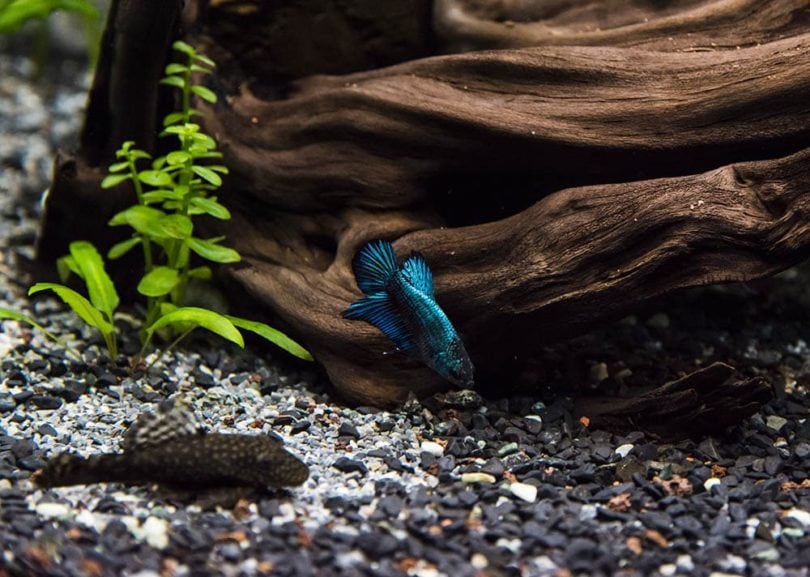
If you have a tendency to overfeed, then you’ll need to carefully consider what type of live food to offer to your Betta fish. If your Betta shares a home with a bottom feeder or snail, then smaller foods may work well since your bottom feeders will eat what your Betta misses. However, if your Betta fish lives alone, you may do better with a food that you can count out the portions, like red wigglers and mosquito larvae.
- You might be also interested in: 12 Safe Betta Fish Tank Mates: Vet-Approved Compatibility Guide
Preference
Some people are unsure about feeding live foods, whether it’s related to their ethical beliefs or their desire to not have to handle “creepy crawlies.” Live foods that can be fed with a dropper or syringe or foods that are killed at the time of packing are good options that provide the nutrients of live food to your Betta fish without you having to handle or chop up a live animal.
Final Thoughts
In these reviews, we found the best overall live food for your Betta fish is the Aqua L’amour Live Daphnia, which are easy to care for and highly sustainable. If you’re on a tight budget, then you’ll appreciate the VPoint Brine Shrimp Eggs, which allow you to hatch as many Daphnia as you need at that time. Uncle Jim’s Worm Farm Red Wigglers is a great option for sustainability and multifunctionality, especially if you keep a compost bin or garden. Regardless of which food or foods you choose, you’ll appreciate knowing that you’re giving your Betta a nutrient-dense diet that helps ensure it will be with you for a long time.
Related Read:
- 5 Best Pellet Foods For Betta Fish – Reviews & Top Picks
- Daphnia for Betta Fish: What You Need to Know
Featured Image Credit: panpilai paipa, Shutterstock




